dye
Dyes refer to the organic substances enable the strong coloring of fiber and some other materials. There are various kinds of dyes. According to the source, they can be divided into natural dyes (such as vegetable dyes, animal dyes and mineral dyes, etc.) and synthetic dyes (or artificial dyes). According to the molecular structure, it can be divided into azo dyes, anthraquinone dyes, phthalocyanine dyes, aromatic dyes and nitro dyes. Based on the application methods, it can be divided into acid dyes, basic dyes, sulfur dyes, reactive dyes, disperse dyes, direct dyes and so on. Dyes have color, but substance having color does not necessarily belong to dyes. Dye must have a chromophore and auxochrome group. Dye contained in the ink should also have water-soluble group such as sulfonic acid group.
Natural dyes are dyes obtained from animals, plants and minerals. According to sources they can be divided into:
1 Plant dyes; dyes extracted from the roots, stems, leaves and fruit of some plants such as indigo extracted from the leaves of indigo (blue); curcumin extracted from turmeric (yellow); alizarin extracted from madder (red) and so on;
2 Animal dyes; dyes extracted from animal body such as carmine extracted from cochineal, etc;
3 Mineral dyes; dyes extracted from the colored inorganic substance of mineral such as chrome yellow, ultramarine blue, brown and other manganese. Owing to its various disadvantages compared with artificial dyes such as incomplete chromatography, application inconvenience and poor fastness, most natural dyes have been eliminated except for a few still in use.
Synthetic dyes, also known as "artificial dyes." is mainly made through the chemical processing of coal tar (or oil processing) fractionation products (such as benzene, naphthalene, anthracene and carbazole, etc.), sometimes are also known as coal tar dyes. Since the earliest several synthetic dyes all took aniline as raw material, it is also known as "aniline dyes." Compared with the natural dyes, synthetic dyes have various kinds with complete chromatography and most of them being colorful, washable and being able to be produced in large scale. Thus, almost all of the current so-called dye refers to synthetic dyes with its dyeing products being one of the common samples of Forensic evidence.
There are two ways for classifications of dyes:
The first type is the basic chemical taxonomy based on the chromophore. According to this, dyes can be classified into azo dyes, sulfur dyes, anthraquinone dyes, indigo dyes, heterocyclic dyes and phthalocyanine dyes, 10 categories in total.
The second type is based on the property of the dye to the fiber or coloring properties. Based on this, the dyes can be divided into acid dyes, neutral dyes, azoic dyes, basic dyes, cationic dyes, direct dyes, reactive dyes, sulfur dyes, vat dyes and other dyes, 14 categories in total.
There are various kinds of dyes of different properties and wide range of applications. However, dyes used as physical evidence are largely fixed in textile fibers or paper, or as a kind of organizational component of ink, printing ink and pen oil. Usually after extraction, it can subject to comparison testing using micro-chemical method, thin layer chromatography, liquid chromatography, UV - visible absorption spectroscopy and fluorescence spectroscopy.
The international development of dye was very rapid in 1970s while people have mainly focused on develop new varieties and improve quality since 1990s with the annual output being maintained at the level of 100 million tons.
Chinese dyes got rapid development in 1980s with the main focus being improving the quality after 1990 as well. The production output still maintain a certain growth rate with annual output being around 300,000 t. In 2000, the output is 315 600 t. Dyes used for textile dyeing account about 85% with the rest being used for the coloring of leather, plastic, paper and paint.
- Chemical Name:Neutral Black B
- CAS:
- MF:
- Chemical Name:Disperse Grey GMS
- CAS:
- MF:
- Chemical Name:Leather Spray Blue A
- CAS:
- MF:
- Chemical Name:Leather Spray Dark Brown DB
- CAS:
- MF:
- Chemical Name:Acid Brown SLO
- CAS:
- MF:
- Chemical Name:Functional Coupling Agent
- CAS:
- MF:
- Chemical Name:Disperse Black SHN
- CAS:
- MF:
- Chemical Name:Leather Brown 2R
- CAS:
- MF:
- Chemical Name:Disperse Orange M-G
- CAS:
- MF:
- Chemical Name:1 VAT GREEN 1
- CAS:
- MF:
- Chemical Name:Reactive Yellow X-RG
- CAS:
- MF:
- Structure:
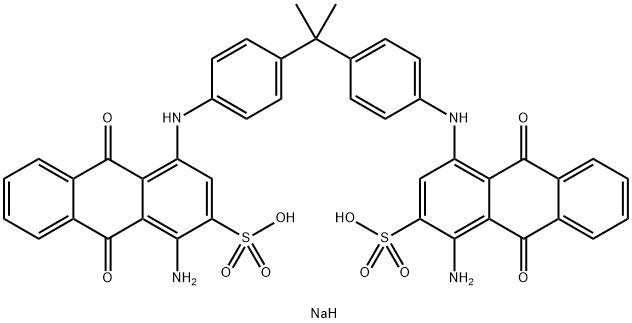
- Chemical Name:Acid Blue 127
- CAS:6471-01-8
- MF:C43H33N4NaO10S2
- Structure:
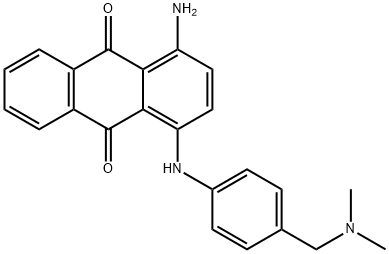
- Chemical Name:1-amino-4-[[4-[(dimethylamino)methyl]phenyl]amino]anthraquinone
- CAS:12217-43-5
- MF:C23H21N3O2
- Chemical Name:Sulphur Indanthrene Blue RNX
- CAS:
- MF:
- Chemical Name:C.I.Acid Black 242
- CAS:
- MF:
- Chemical Name:Leather Red Brown GR
- CAS:
- MF:
- Chemical Name:Neutral Red 2B
- CAS:
- MF:
- Chemical Name:Dispersion mill
- CAS:
- MF:
- Structure:
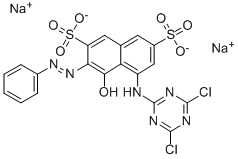
- Chemical Name:PROCION RED MX-5B
- CAS:17804-49-8
- MF:C19H10Cl2N6Na2O7S2
- Chemical Name:DISPERSE DYE
- CAS:
- MF:
- Chemical Name:AcidChromeBlue
- CAS:
- MF:
- Chemical Name:Disperse Dark Brown BR
- CAS:
- MF:
- Chemical Name:Leather Red Brown D
- CAS:
- MF:
- Chemical Name:C.I.Disperse Blue 371:1
- CAS:
- MF:
- Chemical Name:Disperse Blue H3R
- CAS:
- MF:C22H16N2O4
- Chemical Name:Leather Spray Dark Brown NR
- CAS:
- MF:
- Chemical Name:Leather Spray Dark Blue R
- CAS:
- MF:
- Chemical Name:Leather Spray Yellow GRA
- CAS:
- MF:
- Chemical Name:Acid Brown SLM
- CAS:
- MF:
- Chemical Name:VAT DYES GREEN
- CAS:
- MF:
- Chemical Name:Reactive Black K-BR
- CAS:
- MF:
- Structure:

- Chemical Name:Direct Black M,Tardirect Black M
- CAS:6897-38-7
- MF:C38H31N10NaO11S3
- Chemical Name:Disperse Brown BF
- CAS:
- MF:
- Chemical Name:Acid Leather Spray Black
- CAS:
- MF:
- Chemical Name:Leather Bordeaux B
- CAS:
- MF:
- Chemical Name:Neutral Grey S-G
- CAS:
- MF:
- Chemical Name:Neutral cellulose
- CAS:
- MF:
- Chemical Name:Degreasing agent for leather
- CAS:
- MF:
- Chemical Name:Neutral Navy Blue R
- CAS:
- MF:
- Chemical Name:Tanning agent for leather
- CAS:
- MF:
- Chemical Name:Leather Brown RN
- CAS:
- MF:
- Chemical Name:Leather Spray Black ATS
- CAS:
- MF:
- Chemical Name:Neutral Black BG
- CAS:
- MF:
- Chemical Name:C.I.Acid Brown 214
- CAS:
- MF:
- Chemical Name:Sulphur Grass Green GR
- CAS:
- MF:
- Chemical Name:Disperse Grey
- CAS:
- MF:
- Chemical Name:CATIONIC DYESTUFF
- CAS:
- MF:
- Chemical Name:C.I.Mordant Yellow 3
- CAS:
- MF:
- Chemical Name:Neutral Violet B
- CAS:
- MF:
- Chemical Name:Leather Grey DN
- CAS:
- MF:
- Chemical Name:Acid Brown SLP
- CAS:
- MF:
- Chemical Name:Leather Spray Red B
- CAS:
- MF:
- Chemical Name:Direct Blending Series
- CAS:
- MF:
- Chemical Name:acidic shampoo
- CAS:
- MF:
- Chemical Name:Vat Yellow Brown G
- CAS:
- MF:
- Chemical Name:Direct Chestnut Brown
- CAS:
- MF:
- Chemical Name:Sulphur Grass Green G
- CAS:
- MF:
- Chemical Name:Basic Fruit Green
- CAS:
- MF:
- Chemical Name:Neutral Black MBL
- CAS:
- MF:
- Chemical Name:Acid Blue SLD
- CAS:
- MF:
- Chemical Name:Glazing oil for leather
- CAS:
- MF:
- Chemical Name:EXTRAN MA02 NEUTRAL
- CAS:
- MF:
- Chemical Name:Direct Pink 5B
- CAS:
- MF:C32H20O8N5S2Na2
- Chemical Name:SULPHUR BLUE GREEN CV 100%
- CAS:
- MF:
- Chemical Name:CATIONIC GREEN MELACHITE
- CAS:
- MF:
- Chemical Name:Cationic Red x-GRL
- CAS:
- MF:C18H23N6Cl2Zn
- Chemical Name:disperse Yellow RGFL
- CAS:
- MF:C18H14N4O
- Chemical Name:C.I. Acid blue 112
- CAS:12219-19-1
- MF:
- Chemical Name:Acid Black ER
- CAS:
- MF:
- Chemical Name:Leather coating agent
- CAS:
- MF:
- Chemical Name:Neutral Orange RN
- CAS:
- MF:
- Chemical Name:Acid Yellow GGR
- CAS:
- MF:
- Chemical Name:Neutral Brown B
- CAS:
- MF:
- Chemical Name:Disperse Red RFS
- CAS:
- MF:
- Chemical Name:Disperse Black BLL
- CAS:
- MF:
- Structure:
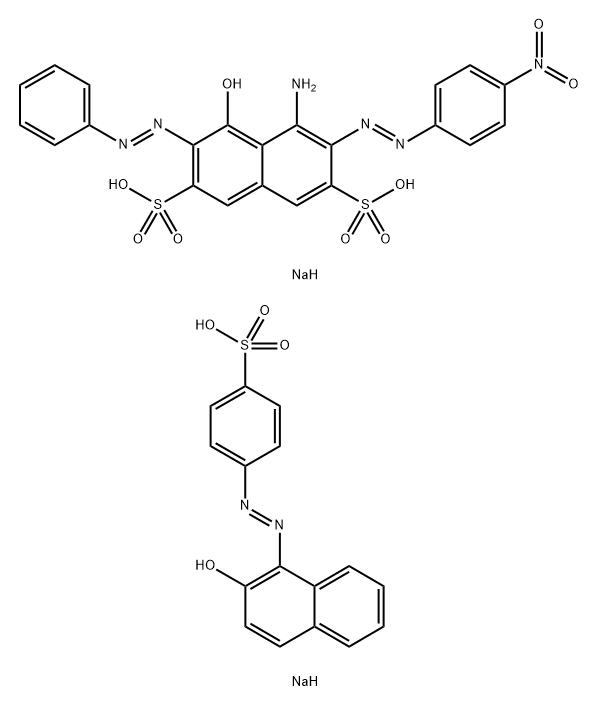
- Chemical Name:4-Amino-5-hydroxy-3-[(4-nitrophenyl)azo]-6-(phenylazo)-2,7-naphthalenedisulfonic acid disodium salt mixt. with 4-[(2-hydroxy-1-naphthalenyl)azo]benzenesulfonic acid monosodium salt
- CAS:167954-13-4
- MF:C38H30N8Na2O13S3
- Structure:

- Chemical Name:2-[[4-[[4-[bis(2-hydroxyethyl)amino]-6-chloro-1,3,5-triazin-2-yl]amino]phenyl]azo]-p-cresol
- CAS:56275-25-3
- MF:C20H22ClN7O3
- Chemical Name:DIRECT BLACK DYES
- CAS:
- MF:
- Chemical Name:(vulcanization) accelrator P
- CAS:
- MF:
- Structure:
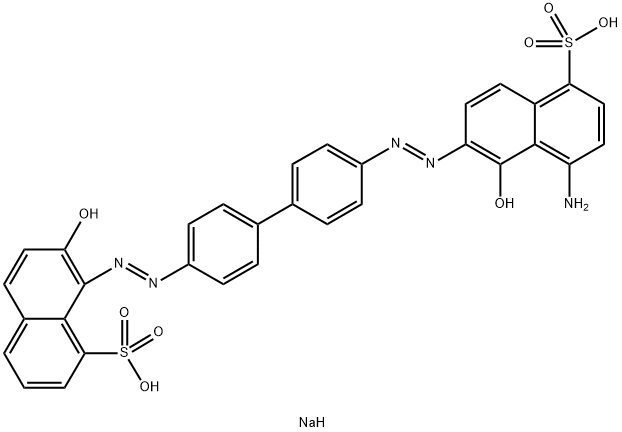
- Chemical Name:amanil developed black bhsw
- CAS:6426-71-7
- MF:C32H24N5NaO8S2
- Chemical Name:Basic Dyestuff
- CAS:
- MF:
- Chemical Name:Solvent Red SR
- CAS:
- MF:
- Chemical Name:Dust remover for leather
- CAS:
- MF:
- Chemical Name:Vat Brown Series
- CAS:
- MF:
- Chemical Name:Leather Spray Black DMS
- CAS:
- MF:
- Chemical Name:Dispersable anthraquinone
- CAS:
- MF:
- Chemical Name:Sulphur Olive Green G
- CAS:
- MF:
- Structure:

- Chemical Name:Hydrogen sulfide scavenging agent
- CAS:
- MF:H2S
- Chemical Name:Leather Spray Yellow GN
- CAS:
- MF:
- Chemical Name:Leather Spray Black 2GB
- CAS:
- MF:
- Chemical Name:Neutral Grey G
- CAS:
- MF:
- Chemical Name:Solvent Green HR
- CAS:
- MF:
- Chemical Name:Finishing agent for leather
- CAS:
- MF:
- Chemical Name:Acid Brown N2R
- CAS:
- MF:
- Chemical Name:Neutramycin
- CAS:
- MF:
- Chemical Name:C.I. Acid violet 66
- CAS:12220-53-0
- MF:
- Chemical Name:Leather Spray Scarlet GB
- CAS:
- MF:
- Chemical Name:Leather Spray Yellow Brown R
- CAS:
- MF:
- Chemical Name:Leather Spray Black NT
- CAS:
- MF:
- Chemical Name:impregnanting agent for leather
- CAS:
- MF: